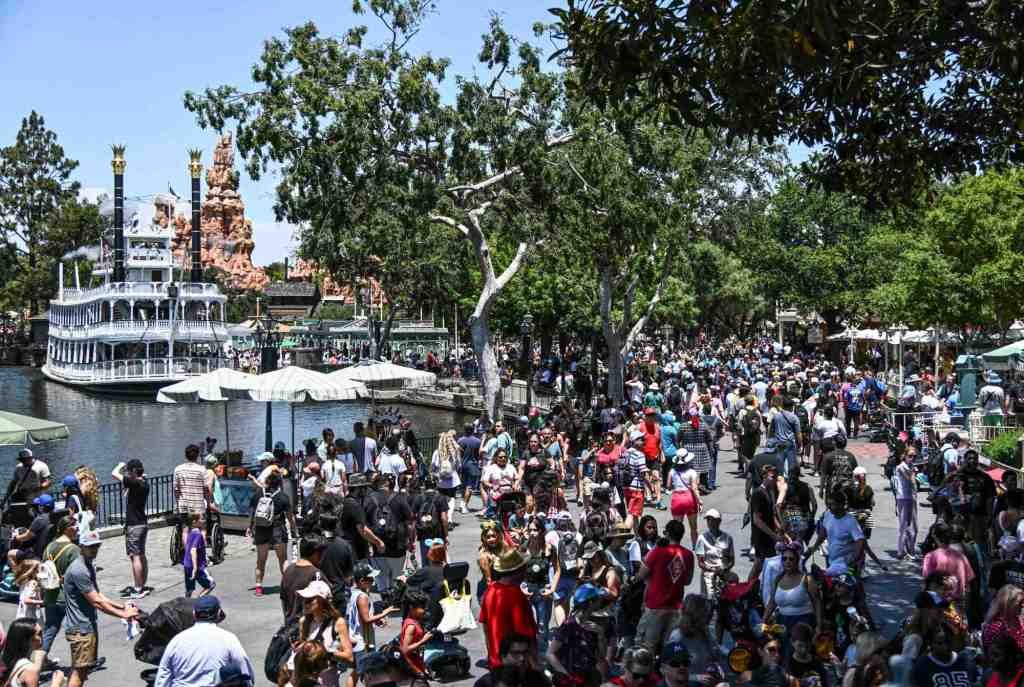The air is thick with anticipation and the smell of churros as families and thrill-seekers converge upon New Orleans Square within Disneyland. An army of visitors snakes through the recently jam-packed queue for the beloved “Pirates of the Caribbean.” Enthusiastic chatter rings out, but beneath the cheerful facade lies a brewing storm of frustration. For the past year and a half, a seemingly endless wait plagued this iconic dark ride, turning what was once a quick, enjoyable adventure into a drawn-out test of patience.
The Pirates of the Caribbean Standby Line: A New Era of Efficiency
On July 1, 2025, Disneyland announced a welcomed change: abandon Lightning Lane access for “Pirates of the Caribbean.” Originally introduced in January 2024 as a stop-gap measure to alleviate crowding from the closures of nearby attractions like the Haunted Mansion and Splash Mountain, this temporary solution ended up ensnaring guests in a web of delays for nearly 18 months. Such a scenario raised questions about the park’s management strategies and long-term vision.
The Lightning Lane Debacle
The Lightning Lane system allows visitors to bypass standby lines for a fee that can start at $32 per day. Although the initiative appeared promising, it quickly spiraled into a double-edged sword. “In theory, Lightning Lane should enhance the guest experience, but in practice, it has sown chaos, particularly in high-capacity attractions,” notes Dr. Fiona Hargrove, a social psychologist specializing in consumer behavior.
- Prior to the implementation of Lightning Lane, average wait times at Pirates of the Caribbean ranged from 5 to 10 minutes.
- Post Lightning Lane addition, the average wait swelled to 30 minutes, with peak times nearing 40.
- This resulted in increased congestion not only within the attraction but also across the surrounding area, leading to longer walk-times and diminished visitor satisfaction.
The “Pirates of the Caribbean” ride, noted for its high-capacity throughput, should have absorbed the volume of guests seamlessly. Instead, the added Lightning Lane access functioned as a bottleneck. According to a report by amusement analyst David Chen, “High-capacity rides like this one can support large crowds without added queue measures, so the bottleneck created by Lightning Lane was entirely avoidable.”
The Ripple Effect
The consequences of this prolonged bottleneck reached beyond just lost time; they rippled across the entirety of New Orleans Square. As waits grew longer, guests became increasingly irritable. “When the standby line stretches into the streets, it turns New Orleans Square into a complete nightmare,” explains Emily Rhodes, a Disneyland historian and author. “This disruption usually results in a lack of foot traffic and a chaotic guest experience, not to mention potential safety concerns.”
With Lightning Lane now being removed from Pirates of the Caribbean, experts are optimistic about a return to more manageable wait times. A study from the Walt Disney Institute indicates that if the queue returns to its former efficiency, it could enhance both visitor experience and satisfaction rates by as much as 40% within a short period.
Addressing Crowd Management
In addition to the removal of Lightning Lane, Disneyland plans to address the design of the queue itself. A redesign will involve redirecting guests through the adjacent shops at the exit of the attraction, effectively mitigating congestion in the pathways. Furthermore, the Port Royal Curios shop has been transitioned into a temporary seating area, likely part of a strategy to manage footflow better as plans for extending the queue take form.
Although management claims this transition is a short-term fix, park advocates argue that investing in significant infrastructure changes to handle crowds effectively is crucial. As analyst Sofia Martinez points out, “Disneyland needs to reconsider its approach to crowd management and guest flow if it wishes to maintain its reputation as the happiest place on Earth.” The industry has observed that the park’s initial charm stems from its attention to guest experience; any misstep can have significant ramifications on its credibility.
Those planning a visit can expect a noticeable difference. The transformation is set to usher in an era where lines are less daunting and the Caribbean never feels as far away from reality. Nevertheless, it begs the question: what other alterations are needed to ensure Disneyland continues to thrive amid evolving visitor preferences?
The impending changes serve as a reminder of Disneyland’s dual role as a theme park and a social institution. As crowds mingle, savoring the magic of Pirates of the Caribbean, one can only hope that the lessons learned during this turbulent period lead to a brighter, more enjoyable future for Disneyland visitors young and old.





